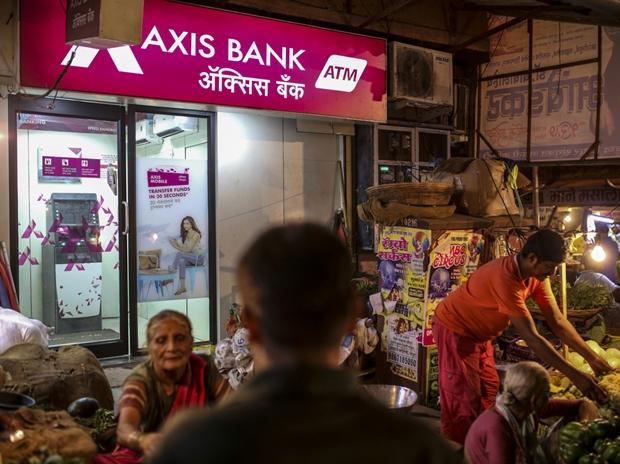[ad_1]
Axis Bank on Monday reported a 62 per cent year-on-year jump in standalone net profit for October-December to Rs 5,853.07 crore as strong growth in net interest income bolstered the bottomline despite higher provisions.
On a sequential basis, the private sector bank’s net profit rose 10 per cent from Rs 5,329.77 crore in July-September.
As has been the case with most banks that have reported earnings so far, Axis Bank’s net interest income rose sharply in October-December, coming in at Rs 11,459 crore, up 32 per cent YoY and 11 per cent sequentially.
In the third quarter of the current financial year, Axis Bank’s net interest margin was at 4.26 per cent, up 73 basis points YoY and 30 bps sequentially.
Addressing the media in a post-earnings call, the bank’s senior management said the improvement in NIM was due to three factors – a structural initiative taken to improve margins, pricing discipline across businesses and the RBI’s rate hikes.
The central bank’s current monetary tightening cycle has assisted pricing of assets while the re-pricing of deposits has lagged as a significant portion of loans are linked to external benchmarks including policy rates.
The environment surrounding interest margins, however, is expected to change in coming quarters as the full re-pricing of deposit rates plays out, the bank’s senior officials said.
“We expect liability cost to increase over the next few quarters with limited compensation from further re-pricing on assets. It’s important to note that we have built a healthy cushion above our medium-term guidance on NIMs,” Puneet Sharma, chief financial officer, Axis Bank said.
“We clearly will endeavour to work towards retaining as much of the cushion as possible. We will be aided in maintaining this cushion in part by the gradual improvement in the composition and the quality of our deposits,” he said.
While refraining from providing short-term guidance on interest margins, Sharma said that Axis Bank’s ‘through-cycle’ guidance on NIMS is 380 basis points. Accordingly the current level of the NIM provides a cushion of 46 basis points, he said. “We do think we have levers in our hands to manage that cushion,” he said, adding that a typical credit cycle could comprise of three to five years.
As on December 31, 2022, Axis Bank’s deposits were at Rs 8.48 trillion, up 9.9 per cent on-year. The bank’s advances were at Rs 7.62 trillion, up 14.6 per cent year-on-year. The lender expects 14-15 per cent credit growth in the next financial year.
On a quarterly average balance basis, savings account deposits grew 10 per cent YoY and 1 per cent sequentially, while current account deposits grew 9 per cent YOY and10% QoQ, the bank said.
Total term deposits rose 9 per cent on-year, while on a quarterly average basis the share of CASA deposits in total deposits was at 44 per cent, up 18 bps on-year and 48 bps on-quarter.
“We’ve grown about 1 percentage faster than industry growth on deposits. It’s also important to note that our CASA growth has been exceedingly strong for the quarter. Our CASA grew 10 per cent YoY and 4 per cent sequentially. Yes, term deposits have increased but it is a way to fund the balance sheet,” Sharma said. Latest Reserve Bank of India data showed that as on December 30, 2022, bank credit growth was at 14.9 per cent while deposit growth was at 9.2 per cent.
According to Sumit Bali, group executive and head, retail lending, the bank had seen some weaknesses in mortgages in October-December due to delays in closures of enquiries. However, the situation had seen improvement in the current quarter, he said.
“On the retail asset growth, you should really look at our focused products – credit cards, personal loans, business loans and those have been strong,” Bali said.
Retail loans grew 17 per cent YoY and 1 per cent QoQ to Rs 4.29 trillion, accounting for 56 per cent net advances.
On the asset quality front, the bank reported an improvement with the gross NPA ratio at 2.38 per cent as on December 31, down from 2.50 per cent a quarter ago and 3.17 per cent a year ago. The net NPA ratio was at 0.47 per cent versus 0.51 per cent a quarter ago and 0.91 per cent a year ago.
The bank’s provisions, however, rose 7.7 per cent on-year to Rs 1,437.73 crore. These included non-recurring, one-time/prudent provisions of Rs 340 crores.
“An example of what would fit in that number effectively is an account that is not 90 days past due but we’ve qualitatively classified it as an NPA and made adequate provisioning against that account. These reflect one-time prudent choices we’ve made with respect to classification which is why we’ve called that out for slippages,” Sharma said.
As on December 31, the provision coverage was at 81 per cent, as compared to 72 per cent a year ago. The Basel III Capital Adequacy Ratio was at 17.6 per cent as on December 31, versus 17.4 per cent a year ago.
[ad_2]
Source link



